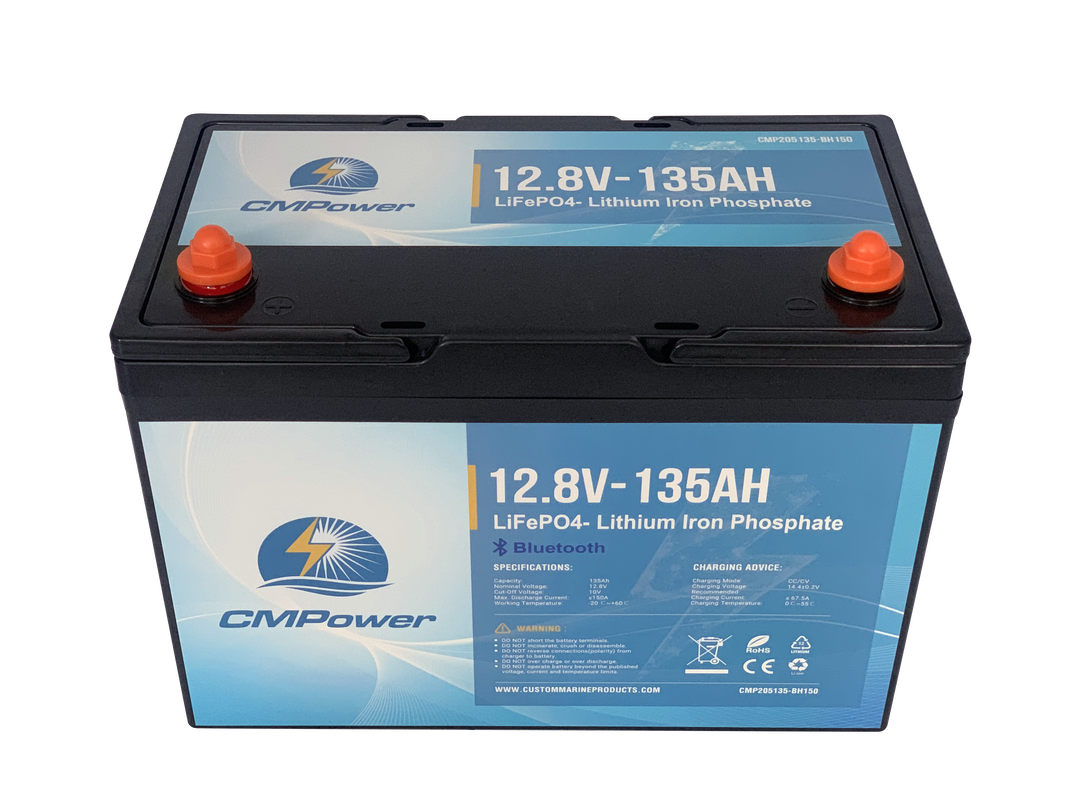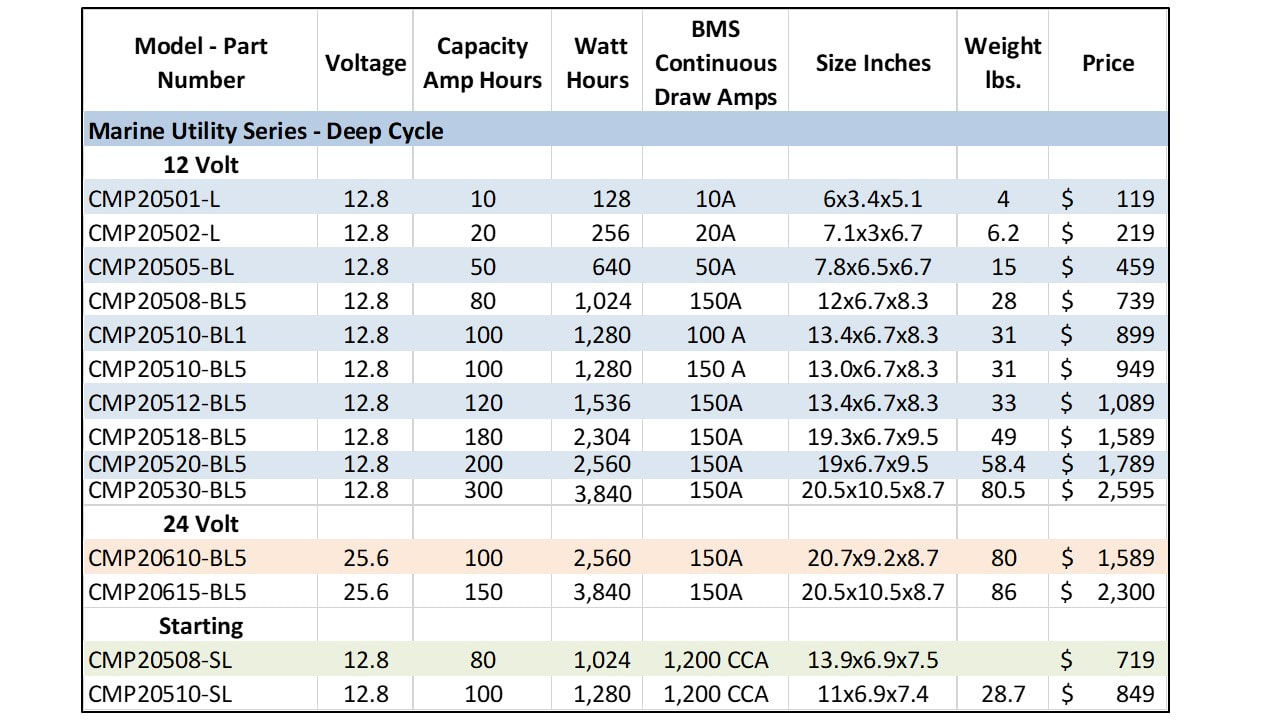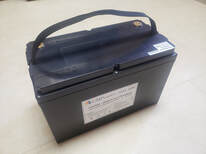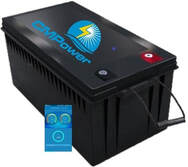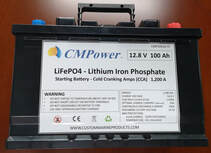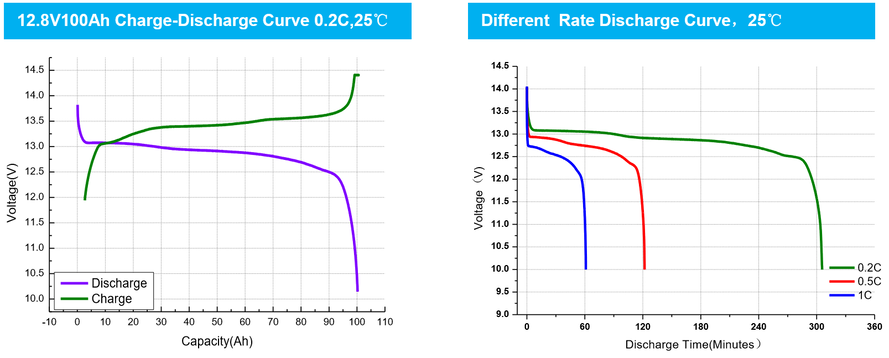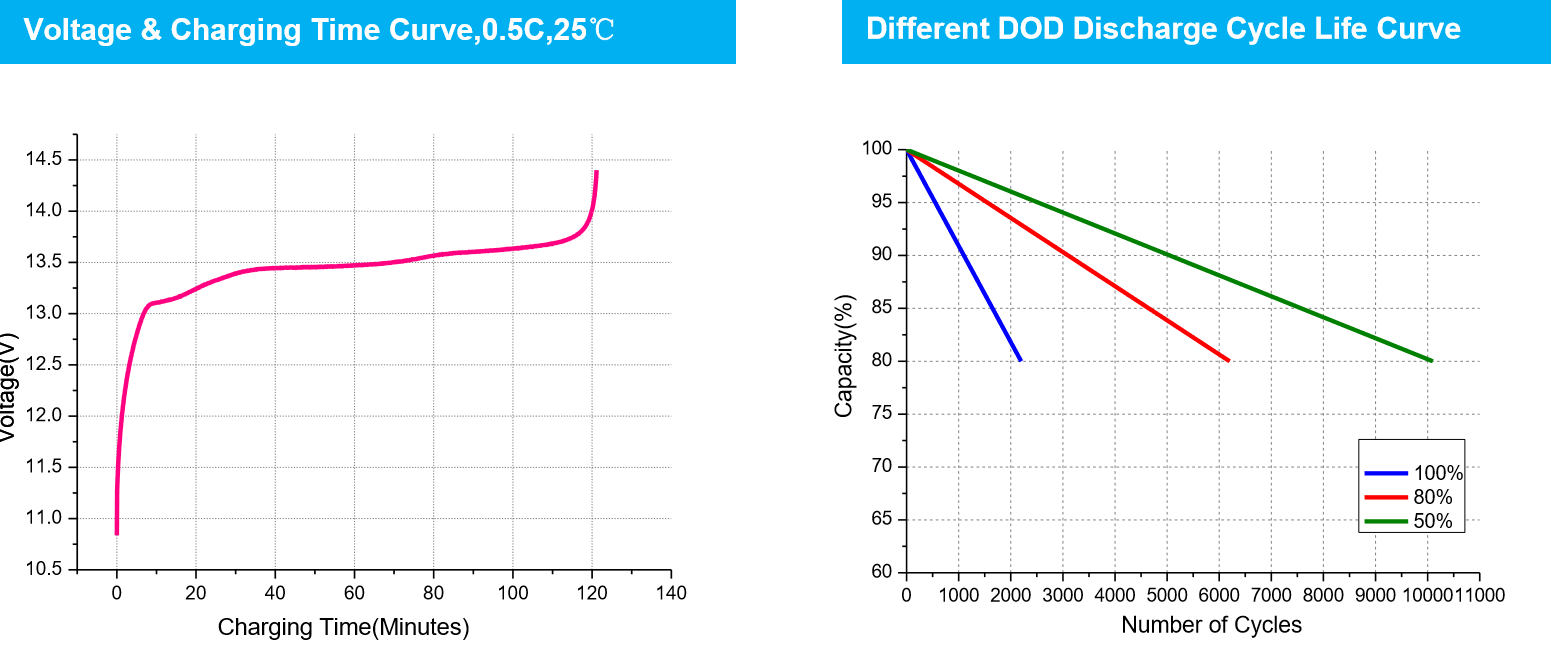|
|
LiFePO4 Lithium Marine BatteriesBluetooth app for phones - always know how much power you have.
- Very high continuous power draw (150 Amps) Great for house bank, starting engines (<50 hp [have some starting >100hp]), winches, bow thrusters, trolling motors, windlasses. Much higher max draw than other lithium batteries. - Four times more power per pound than AGM batteries (lightweight) - 20% more efficient charging, it's like adding 20% more solar power - Charges up to 5x faster than lead acid/AGM - Will last up to ten times longer than lead acid/AGM batteries - 95% usable power vs 60% or less in lead acid/AGM batteries - Wire 2 or 3 in series for 24v or 36v, or use a single 24v lithium battery |
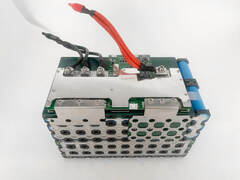 LiFePO4 Battery Showing Cells and BMS Electronics
LiFePO4 Battery Showing Cells and BMS Electronics
LiFePO4 lithium batteries are the safest type of lithium batteries as they will not overheat, and even if punctured they will not catch fire. The cathode material in LiFePO4 batteries is not hazardous, and thus poses no negative health hazards or environmental hazards. CMPower Lithium batteries are plug compatible with lead acid batteries and will accept a charge from most lead acid configured chargers. The charge voltage and amperage should be within the range specified for the LiFePO4 batteries.
A CMPower (Custom Marine Products) deep cycle lithium battery has two primary components, the LiFePO cells and the Battery Management System (BMS). Both are housed in a sealed battery case. The quality of each component is key to the longevity and performance of the battery. LiFePO cells are wired in parallel to form a module producing 3.2 volts. Four of these units are connected in series to form a rated 12.8 volt Lithium battery; eight for a 25.6 volt battery. The temperature, charge and discharge of each cell is monitored and managed by the BMS, a computer of sorts built into each battery. In addition to cell monitoring and management, the BMS will prevent over discharging of cells by disconnecting the load and will prevent cell over charging by reducing charge current or stopping the charge process. The BMS will also shut down the system if the battery temperature is out of range.
Our most popular CMPower 12V deep cycle Lithium battery is rated at 120 Amp hours and is roughly the size of a group 31 lead acid battery. LiFePO4 batteries are also rated as to their maximum discharge capacity; 80 - 100 Amps max discharge capacity is typical. Most CMPower Lithium batteries have a discharge capacity of 150 Amps to robustly accommodate most house, start, windlass, electric winch and inverter battery power requirements.
CMPower LiFePO4 Lithium Marine Batteries - Product Summary
Marine Utility Series
Features include:
• High performance Lithium Iron Phosphate (LiFePO) cells - support a deep cycle draw down
• Heavy duty BMS with 150 amp continuous current draw - support most house, start, windlass, electric winch and inverter battery power requirements
• Bluetooth battery monitor - built-in comprehensive battery monitor displayed on a Smartphone or tablet
• Tough ABS case with vibration dampening - built to withstand the harsh marine environment
• Up to 4 batteries in series and 10 in parallel - flexibility to configure a power system to accommodate boat requirements
• Up to 4,000 charge/discharge cycles - exceptional longevity and reliability
Group Sizes: 80s: Group 27 (a bit smaller) 100, 120, 125: Group 31 50s w room to spare: Group 24 180, 200, 300: 8D 150: 4D
|
Click to Download
Data Sheet 12 Volt 10 Ah Data Sheet 20 Ah Data Sheet 50 Ah Data Sheet 80 Ah Data Sheet 100 Ah Data Sheet 120 Ah Data Sheet 180 Ah Data Sheet 200 Ah Data Sheet 300 Ah Data Sheet 24 Volt 100 Ah 24V Data Sheet 150 Ah 24V Data Sheet 12 Volt Start 100Ah Start Data Sheet |
Features include:
• High performance Lithium Iron Phosphate (LiFePO) cells - support a deep cycle draw down
• Heavy duty BMS with 150 amp continuous current draw - support most house, start, windlass, electric winch and inverter battery power requirements
• Bluetooth battery monitor - built-in comprehensive battery monitor displayed on a Smartphone or tablet
• Tough ABS case with vibration dampening - built to withstand the harsh marine environment
• Up to 4 batteries in series and 10 in parallel - flexibility to configure a power system to accommodate boat requirements
• Up to 4,000 charge/discharge cycles - exceptional longevity and reliability
• Integrated Fuel Gauge - low state-of-charge alarm sounds when the battery power is at 20% and 15%
Charge/discharge cycles - CMPower Lithium batteries have an expected life of 2,000-4,000 charge/discharge cycles at a discharge to 95%. Lead acid batteries have an expected life of 300-500 charge/discharge cycles at a discharge to 50%.
Discharge profile - CMPower LifePO4 Deep cycle Lithium batteries stay at a voltage of 12.5 to 13.4 volts during discharge of up to a 95+%. Voltage then drops off rapidly. A lead acid battery decreases in voltage from 13 to below 11.5 volts as more current is drawn. This means many appliances will operate more efficiently throughout the discharge cycle using LiFePO4 batteries.
Discharge rate - The BMS built into CMPower batteries has a 100 amp or a 150 amp discharge capacity. This means the batteries can sustain a heavy charge and discharge without damage or degradation. Our manufacturer has advised us that the quality of the cells and quality of the BMS is key to the longevity and performance of a LiFePo4 battery. We have seen this firsthand. Great for running windlasses, bow thrusters, or using on a fishing boat for running the trolling motor/electronics/live well/power pole as well as starting the engine.
For example, 3 group 31 110 amp hour lead acid batteries weighing a total of 200 pounds can be replaced by 2 group 31 size 100 amp hour LiFePO4 batteries weighing a total of 62 pounds. Both configurations have roughly the same power capacity because the lead acid can be safely drawn down 50% (330 amps @50% = 165 amps) and the Lithium battery can be safely drawn down 95% (200 amps @ 95% = 190 amps). Also, the lead acid will endure 300-500 cycles and the LiFePO4 over 2,000 cycles. Excellent for trolling motors as it is much easier to move the battery on and off for recharging - that is unless you have a portable solar setup on your fishing boat.
Example: Lead Acid LiFePO4 (Lithium)
Battery Bank 3 Group 31 110 Ah 2 Group 31 size 120 Ah
Rated Capacity 330 Amps 240 Amps
Useable Capacity 165 Amps 216 Amps
Charge/discharge cycles 300-500 2,000-4,000
Weight 200 pounds 62 pounds
Cost $1,200 $2,178 ($1,089 each)
Cost per useable Ah $7.27 $9.08
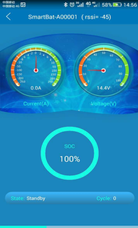 Smartphone app for LiFePO4 Battery Monitoring
Smartphone app for LiFePO4 Battery Monitoring
Compatibility - While the optimal charging parameters vary between Lithium, AGM and lead acid battery technology, the BMS built into CMPower LiFePO4 batteries compensates for this. Thus, our LiFePO4 boat batteries are compatible with most lead acid battery charging systems.
Charging Multiple Battery Types - LiFePO4 and lead acid or AGM batteries are not compatible and should not be combined. However, CMPower batteries used for the house bank and lead acid or AGM batteries used for engine starting can both charged from a single alternator or generator. This requires some easy to install electrical equipment including a DC-DC charger or a battery isolator.
Bluetooth Battery Monitoring - CMPower Lithium batteries are equipped with Bluetooth for monitoring battery State of Charge (SoC) through a Smartphone or tablet app. This is important because unlike lead acid batteries, LiFePO4 batteries maintain a constant voltage between 13 and 13.4 volts so a voltmeter is not an accurate indicator of SoC. A built in Bluetooth capability enables real time monitoring of each battery through an app on either an Android or IOS smartphone or tablet. The app displays the state of charge (SoC) of the battery, the amp draw and voltage level, the temperature, the time to full charge and the number of charge/discharge cycles. This capability is nearly equivalent to having a built in battery bank monitoring system like a Link 2000. Have confidence that you have plenty of power and know exactly when you'll need to run your engine. Terrific feature for fishermen using a single battery for both a trolling motor and engine starting battery.
Winter Operation and Storage - CMPower LiFePO4 Lithium deep cycle batteries can be stored in temperatures from -10°F to +104°F (-25°C to +40°C). It is recommended they not be heavily charged and discharged at temperatures below -4°F (-20°C) . It is recommended that the negative terminals be disconnected during winter or long term storage so there is no chance of draining the batteries while in storage. LiFePO4 lithium batteries should be recharged at a minimum every 6 months while in storage.
Long Term Investment - Keep Them for Life - Because the number of charge cycles of well cared for CMPower LiFePO4 lithium batteries is in excess of 2,000 they can be a long term investment you can take with you from boat to boat or boat to RV. Also, because the batteries have a built in cycle recording system, the batteries can be resold at a value based on their number of charge cycles. For example: The owner of a sailboat purchased three LiFePO4 batteries two years ago; two for house and one for engine starting. After two years of cruising the starting battery had 2 charge cycles and the house batteries, wired in parallel, had only 20 charge cycles as shown on the Bluetooth APP. These batteries are like new and can be taken to their new boat or sold as quality used batteries. In fact, if and when CMP Lithium batteries become available from our customers, we will post them on our website for purchase.
Warranty - 5 years + - Custom Marine Products warrants each branded battery to be free of defects for a period of 1 year from the date of sale as determined by either the customer’s sale receipt, or other proof of purchase plus an additional 4 years prorated. Within the warranty period CMP will credit, replace or repair the product and/or parts of the product if determined to be defective in material or workmanship. CMPower batteries are built to last a minimum of 2,000 cycles and still maintain 80% of rated energy capacity. This warranty applies to the original owner.
Cost - CMPower LiFePO4 deep cycle lithium batteries are 2 to 4 times the cost of comparable lead acid or AGM type batteries. Cost justification is often based on convenience, performance and longevity. Factors to consider in evaluating cost include the number of charge cycles, power to weight ratio, charge and discharge efficiency and compatibility. Over the long term, these batteries are often considerably more cost effective than lead acid or AGM batteries.
Bottom line - CMPower LiFePO4 lithium marine batteries have the following advantages:
1. Bluetooth equipped to monitor battery State of Charge with free app - built in battery monitor
2. can be drawn down 95+% vs 50% - more usable capacity
3. hold steady voltage through 95% discharge - constant power and voltage
4. generally plug compatible with lead acid chargers - drop-in replacement
5. charge more quickly and efficiently than lead acid batteries - excellent for solar systems
6. have up to (and beyond) 10 times more charge cycles than lead acid and AGM batteries - could last a lifetime
7. nontoxic and safe, very low fire risk - no toxic gases emitted, many built-in protections
8. low self-discharge - easy winter storage, long shelf life
9. lighter than lead acid - lightweight, generally less than half the weight of lead acid (~4x the power per pound)
10. cost effective in the long run
Lithium batteries are more expensive than lead acid however their many advantages and longevity often outweigh the additional initial investment.
CMPower Battery Store
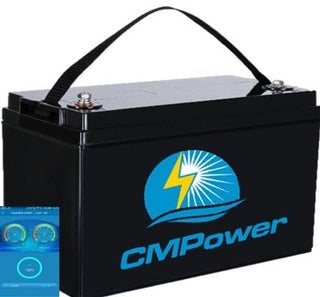
This 12V 10 Ah LiFePO4 lithium battery is designed for both house and engine start marine applications. It has a built in 10 amp continuous draw Battery Management System (BMS) and is plug compatible with most lead acid and AGM charging systems. This battery measures 13x6.7x8.3 inches 330x170x210 mm.
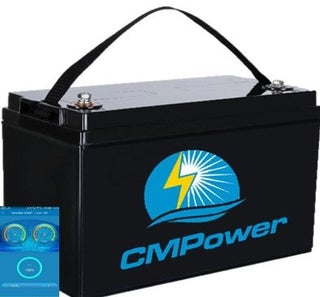
This 12V 20 Ah LiFePO4 lithium battery is designed for both house and engine start marine applications. It has a built in 20 amp continuous draw Battery Management System (BMS) and is plug compatible with most lead acid and AGM charging systems. This battery measures 13x6.7x8.3 inches 330x170x210 mm.
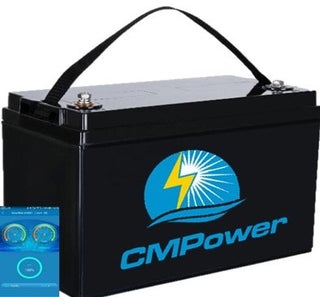
This 12V 50 Ah LiFePO4 lithium battery is designed for both house and engine start marine applications. It has a built in 100 amp continuous draw Battery Management System (BMS) and is plug compatible with most lead acid and AGM charging systems. A Bluetooth battery monitor system for monitoring the state-of-charge of the battery with a free app is included.
This battery measures 7.8 x 6.5 x 6.7 inches

Dimensions: 9x5.5x8.2 inches 229x139x209 mm.
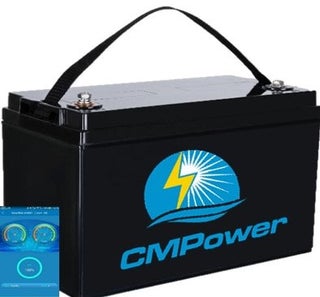
This 12V 80 Ah LiFePO4 lithium battery is designed for both house and engine start marine applications. It has a built in 150 amp continuous draw Battery Management System (BMS) and is plug compatible with most lead acid and AGM charging systems. A Bluetooth battery monitor system for monitoring the state-of-charge of the battery with a free app is included.
This battery measures 13x6.7x8.3 inches 330x170x210 mm.
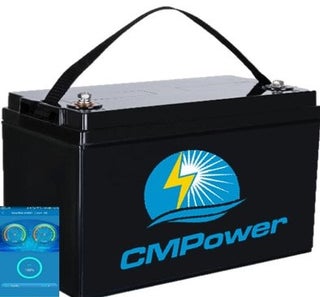
This battery measures 13x6.7x8.3 inches 330x170x210 mm.
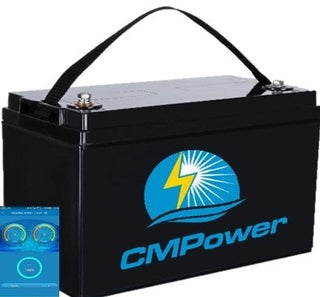
This 12 V100 Ah LiFePO4 lithium battery is designed for both house and engine start marine applications. It has a built in 150 amp continuous draw Battery Management System (BMS) and is plug compatible with most lead acid and AGM charging systems. A Bluetooth battery monitor system for monitoring the live state-of-charge of the battery with a free phone app is included.
This battery measures 13x6.7x8.3 inches 330x170x210mm.
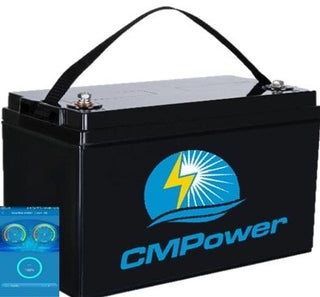
This 12 V120 Ah LiFePO4 battery is designed for both house and engine start marine applications. It has a built in 150 amp continuous draw Battery Management System (BMS) and is plug compatible with most lead acid and AGM charging systems. A Bluetooth battery monitor system for monitoring the state-of-charge of the battery with a free app is included.
This battery measures 13x6.7x8.3 inches 330x170x210 mm.
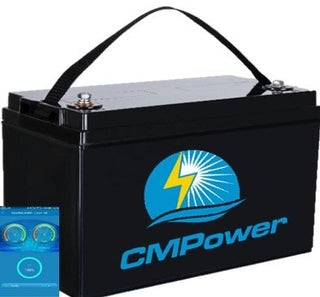
This 12 V 125 Ah LiFePO4 battery is designed for house marine and RV applications. It has a built in 150 amp continuous draw Battery Management System (BMS) and is plug compatible with most lead acid and AGM charging systems. A Bluetooth battery monitor system for monitoring the state-of-charge of the battery with a free app is included. This battery has a built-in alarm system to notify when the state-of-charge is 20%.
This battery measures 12.9x6.8x8.3 inches 328x172x212 mm.
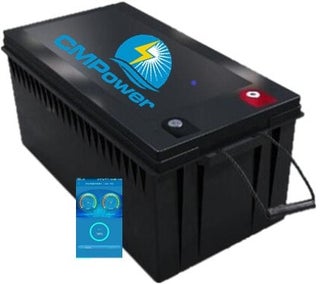
This battery measures 18.9x6.7x9.5 inches 480x170x240mm.
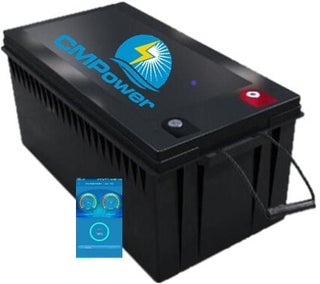
This 12 V180 Ah LiFePO4 battery is designed for both house and engine start marine applications. It has a built in 150 amp continuous draw Battery Management System (BMS) and is plug compatible with most lead acid and AGM charging systems. A Bluetooth battery monitor system for monitoring the state-of-charge of the battery with a free app is included.
This battery measures 18.9x6.7x9.5 inches 480x170x240mm.
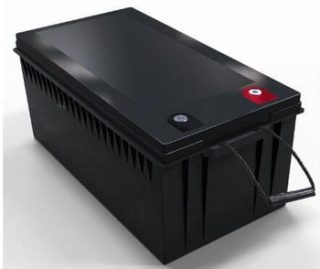
This 12 V200 Ah LiFePO4 battery is designed for both house and trolling motor marine applications and RV. It has a built in 120 amp continuous draw Battery Management System (BMS) and is plug compatible with most lead acid and AGM charging systems. A Bluetooth battery monitor system for monitoring the state-of-charge of the battery with a free app is included.
This battery measures 20.5x9.2x8.7 inches 521x233x220 mm, weighs 60 pounds 27 kg
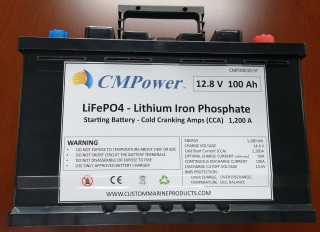
This 12 V 100 Ah 1,200 CCA LiFePO4 battery is designed for engine start marine and RV applications. It has a built in 150 amp continuous draw Battery Management System (BMS) and is plug compatible with most lead acid and AGM charging systems.
This battery measures 15.7x6.9x7.4 inches 398x175x188 mm and weighs 29 pounds 13 kg.
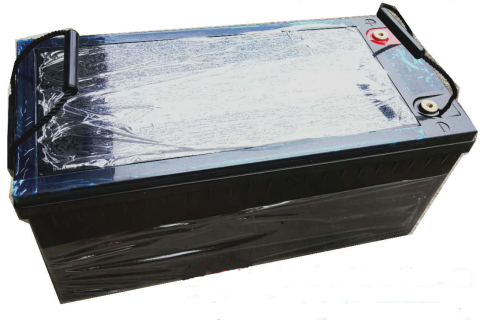
This 24 V150 Ah LiFePO4 battery is designed for both house and engine start marine applications. It has a built in 120 amp continuous draw Battery Management System (BMS) and is plug compatible with most lead acid and AGM charging systems. A Bluetooth battery monitor system for monitoring the state-of-charge of the battery with a free app is included.
This battery measures 20.5x10.5x8.7 inches 520x267x220mm.
Why use Lithium batteries for a trolling motor?
What are the major components of a LiFePO4 battery?
Are lithium batteries good for trolling motors?
Can I use a single lithium battery for starting and everything else on my fishing boat?
What if my controller does not have settings for lithium batteries?
Home Page Solar Panels Mounting Kits Product Page Marine Solar Systems Gallery of Installations Customer Comments Contact Us
Call 248 705-8337 or email info@custommarineproducts.com
Article On How To Size Your Solar Panels For Your Boat
Customer Reviews Return Policy Privacy Policy Shipping Times/Rates


